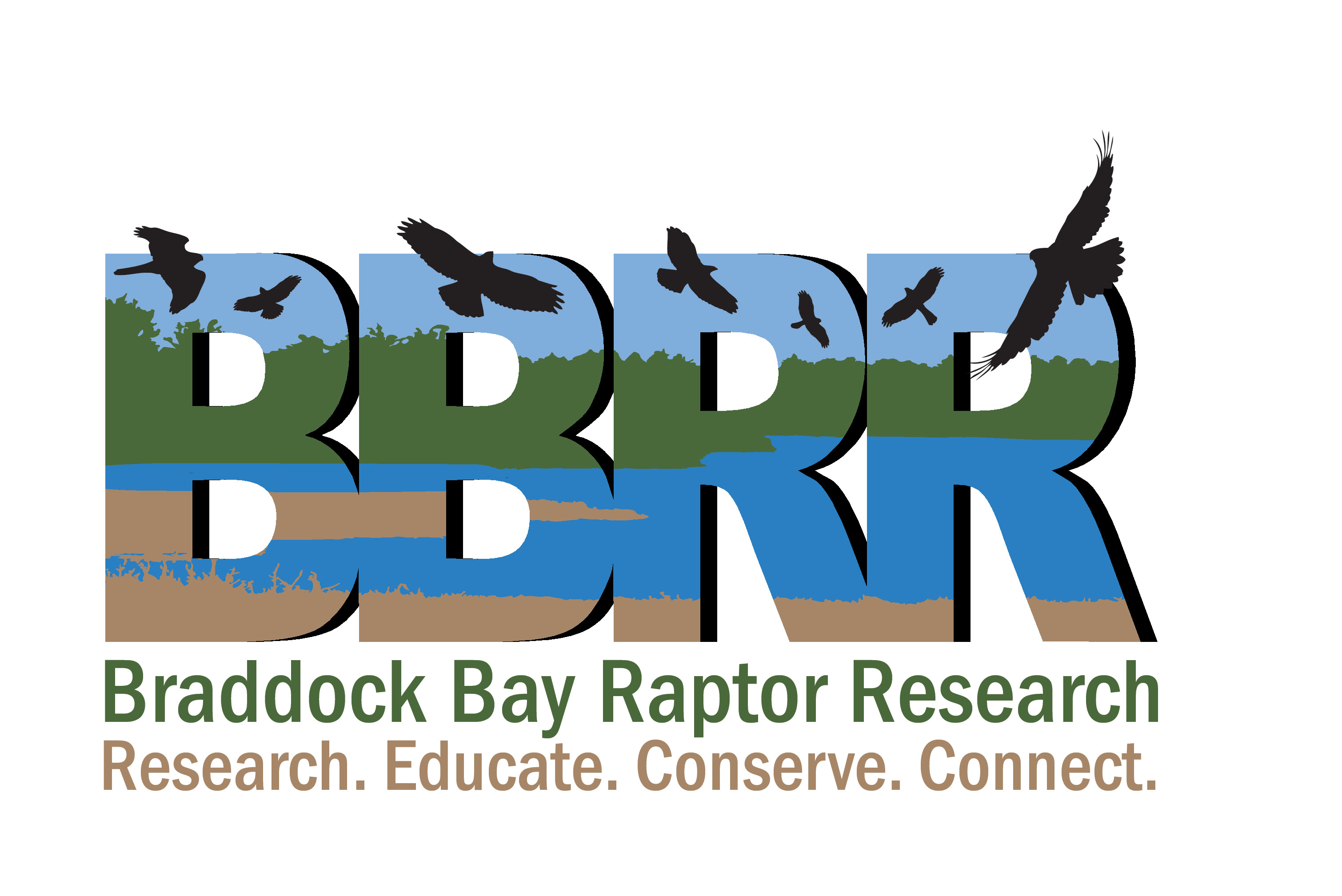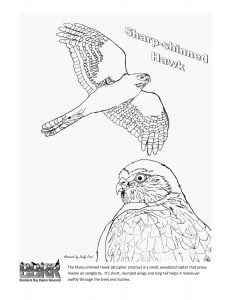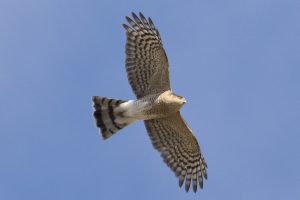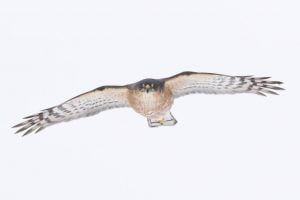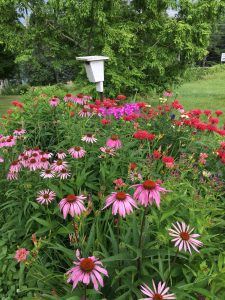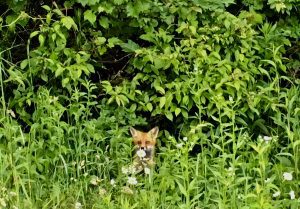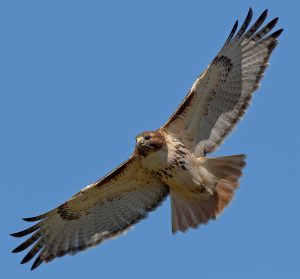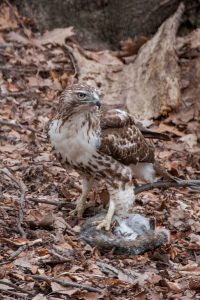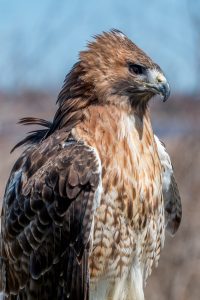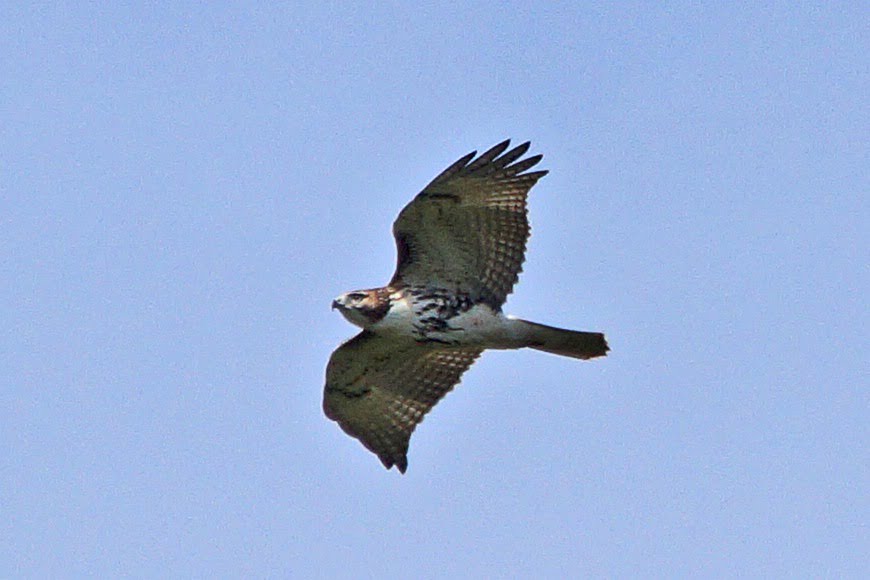
Volunteer Opportunity: Summer Raptor Count
For all you hawk watchers out there missing spring migration…BBRR is looking for volunteers to assist with our 2020 Summer Raptor Count. This count began in the summer of 2019, to document the natal dispersal flight of raptors which occurs at Braddock Bay primarily in the month of August. These flights are typically made up of mainly Red-tailed Hawks, but other species commonly occurring are Broad-winged Hawks, Bald Eagles, Turkey Vultures, along with a smattering of others.
We are looking for volunteers to help conduct the count, or assist with data recording, from August 1-31. Minimum coverage will be 2 hours/day, weather depending. Inexperienced volunteers will be partnered up with a more seasoned counter. It’s a great time for beginners to polish up on your raptor ID skills and get ready for the next migration season. Training and orientation will be provided prior to the start of the count season.
For more information and to sign up, send an email to information@bbrr.org or call and leave a message at 585-267-5483.
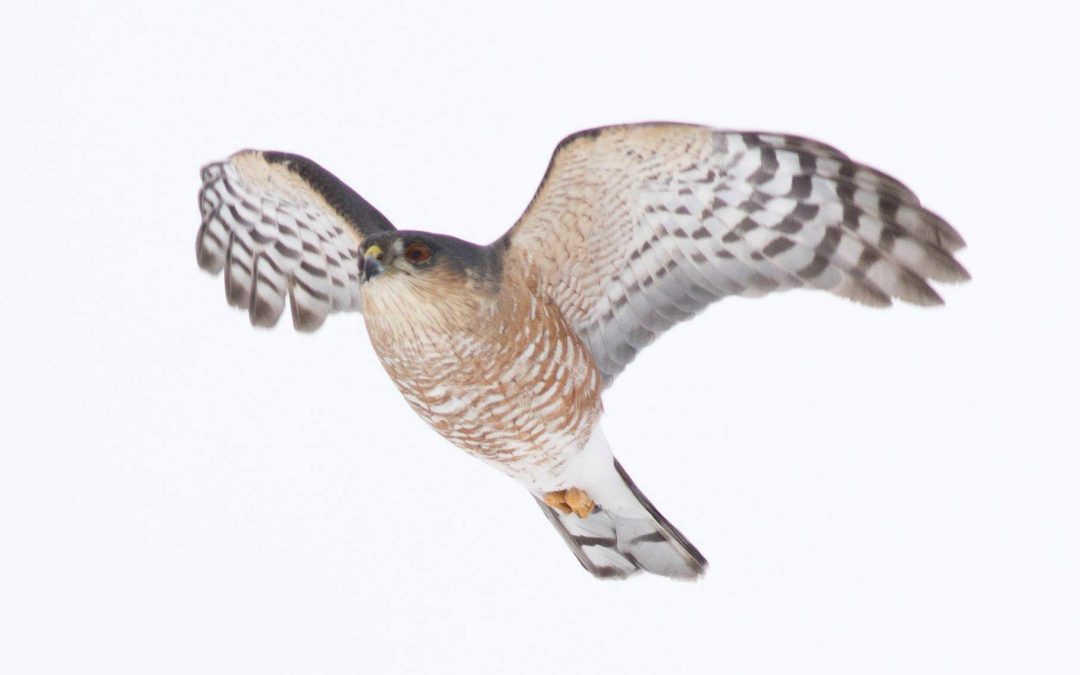
Sharp-shinned Hawk Coloring Sheet
Share your Sharpies with BBRR!
The Sharp-shinned Hawk is a fascinating little forest raptor, who often visits backyard bird feeders for a song bird meal. The “Sharpie” is our featured species this spring, and we have made available a coloring sheet for kids (and kids at heart) thanks to the artwork of Emily Ford. Download the coloring sheet by clicking the image on the right, and when you’ve completed your masterpiece BBRR would love to display a photo of it on our website and social media. To submit, send in an email to information@bbrr.org, or post to our Facebook page https://www.facebook.com/BraddockBayRaptorResearch/
It’s the perfect time of year to submit these colorings as we are nearing “Sharpie Madness” time when their peak of migration hits in late April. We look forward to seeing you share your creativity!
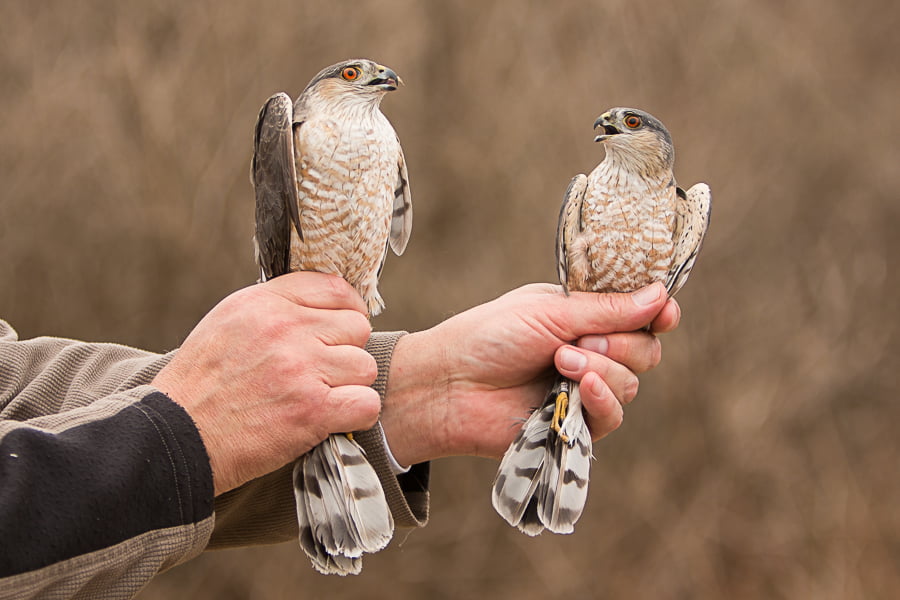
Featured Species: Sharp-shinned Hawk
Photo above taken by raptor bander Jill Heimrich of a female (left) and male Sharp-shinned Hawk. All other photos in this post taken by David Brown.
Hey Kids! Download our Sharp-shinned Hawk Coloring Sheet
Sharp-shinned Hawk Facts – by Hannah Brenner
“Is that a Sharp-shinned or a Cooper’s hawk?”
It’s a question those new to birding ask all the time, but even experienced birders can have difficulty from time to time. With practice, anyone can identify this amazing raptor (usually!).
Sharp-shinned hawks are small and, as with most raptors, they are sexually dimorphic in size. Males could be almost as small as a kestrel or slightly larger than a blue jay, while females can be almost the size of male Cooper’s hawks. Adults of both sexes have grey coloring from above and orange bars across their breast. These hawks have thin legs and are named for the ridge found on their tarsus.
There are a few good field marks to differentiate sharpies from Cooper’s hawks. In flight, look at the head! Cooper’s Hawks have a larger head that goes past the wings while Sharp-shinned Hawks have small heads that barely show in front of the wings. In flight you can also look at the wing beats. Sharpies have quick, frequent flaps but Cooper’s Hawks are slower. Additionally, Cooper’s Hawks have a rounded tail tip and sharpies have a flat tail tip. Cooper’s hawks have lighter feathers around the back of their neck giving them more of a cap effect, while Sharp-shinneds have more of a hooded look.
Sometimes sharpies can be seen at bird feeders, but they aren’t there for the seed! Their diet consists mostly of small birds, though they sometimes eat other small animals as well. Sharp-shinned hawks are stealthy hunters, often surprising their prey.
Sharp-shinned Hawks have a wide geographic range. They can be found far north in Alaska and Canada, and all the way south through Panama. Some stay in the same place year round – such as those in the Appalachian Mountains or mountains in the west. Others migrate from the north to Central America.
Sharp-shinned Hawks at Braddock Bay – by David Mathiason
The Sharp-shinned Hawk is a common, but not often seen, raptor. However, during migration this little hunter of the woods can be seen in great numbers at various hawkwatch sites. It is the third-highest species counted at Braddock Bay in spring, with a 10-year average (2010 to 2019) of 3,804 birds counted. It also is the raptor species that gets banded the most. The raptor that gets counted the most is the Broad-winged Hawk with a 10-year average of 34,000 but those are only occasionally captured. The second most numerous species on the count is the Turkey Vulture, and they do not get banded at all.
The male Sharp-shinned Hawk is the smallest of the birds that we band at BBRR, weighing in with an average of 100 grams (3 ½ ounces). The females are nearly twice that size, with an average weight of 180 grams. (Weight data from personal banding records of David Mathiason.) The banders at BBRR have banded 12,359 sharp-shinned hawks from 1984 to 2019, for a yearly average of about 344 birds. Of those 12,359 hawks banded, 150 of them were encountered later (1.2 % encounter rate) and one of those 150, one was encountered a second time. Those encounters tell some interesting stories.
The bird that was encountered twice was originally banded on April 13, 1988 – a female that was aged as having hatched in 1987. She was recaptured on Oct 6, 1988 by a bander in Ontario, Canada just north of Lake Erie. In July of 1991, she was reported as having been found dead near Portsmouth, Ohio. We can assume this female was hatched somewhere in Canada, in 1987. There is no way to know how far south she ventured the following winter. She was captured the first time and banded on her way north in 1988 by a BBRR bander. That fall she was again captured, in Canada, on her way back south. From that point on, however, we can only speculate about her journey. Most likely this little hawk completed her round trip journey two more times, heading back to Canada to breed in 1989 and 1990. She didn’t survive to make it back to Canada in 1991, mostly likely dying in Ohio during her spring migration back northward. She lived about four years.
Our longest distance recovery was a female that made it all the way to Los Angeles, California. That bird was a female banded in September, 1999 during her first year of life. She was found dead in January of 2005 when she was five and a half years old. Our longest survivor was a male who was banded May 9, 2007 when less than a year old (hatched 2006). He was captured again in October of 2015 at Prince Edward Point, Canada. At that point he 9 years old; he was released and sent on his way south to continue his journey.
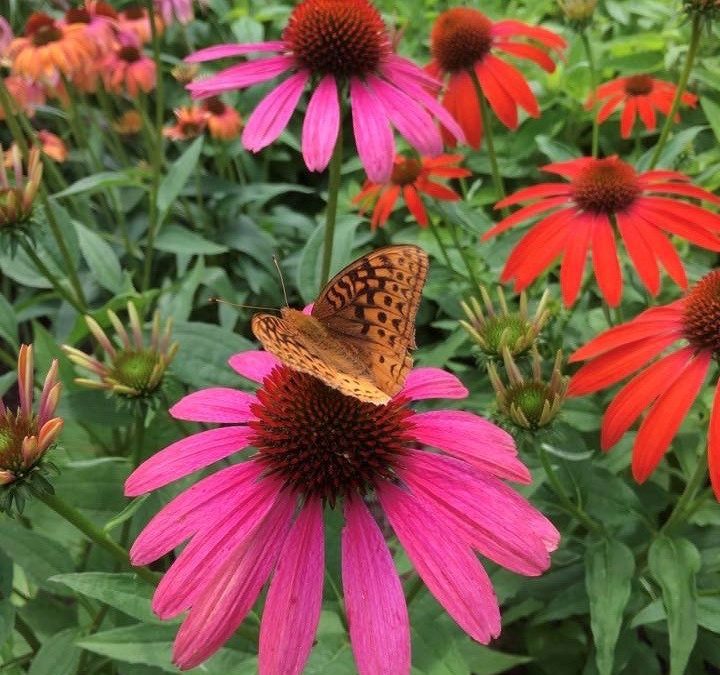
Recipe for Adding Native Plants to Any Garden
BBRR is fortunate to have some very talented volunteers, including the author of this article, Carol Erb. Carol is a very experienced landscaper and Master Gardener, who specializes in organic and native gardening. Carol was to be a presenter at Bird of Prey Days this year, but she’ll be taking a raincheck for next year. In the mean time, she wrote this article on native gardening to share ideas that anyone can incorporate into their own landscape. We hope you enjoy giving some of her ideas a try!
At this time when more people are cooking at home, it can also be an opportune time to create a garden buffet for you and the wildlife in your world. I offer you my recipe and resources for putting together a feast for all of your senses, and also a chance to provide a much needed rest stop for the foraging wildlife. As Daena Ford said to me, “Don’t Let Time Be the Only Things on your Hands…Get them Dirty!”
First, some definitions and preparatory instructions before the recipe:
To add flavor and color to your garden, it is important to have some native plant species on hand in the form of shrubs, trees or wildflowers. My recipe is simple: no need to go totally native, but instead add to what you already have in your garden pantry.
Native plants are defined as indigenous plant species that have adapted to specific ecosystems and benefit both plant and animal diversity. New York State has 42 different ecoregions, all with unique plant profiles! Native plants are better able to compete against invasive species than non-native plants.
Know the invasive species already in your yard. Check out www.dec.ny.gov and look up the invasive plant list. Do your best to remove these from your property (often a continuous process). Check before you buy, or before you accept a handout of “free” plants from a generous gardener. Once you can identify and reduce these invaders, it will help to clear the table for your new menu of plants and welcomed guests.
It is essential that your view of “a Weed” is drastically adjusted. Chef Sean Sherman, better known as The Sioux Chef explains, “WEED is a Lazy word. It implies everything you don’t know.” And what we casually call weeds are edible gems to not just pollinators and birds, but were our ancestors’ sustenance. Check out, Bradford Angier’s Field Guide to EDIBLE WILD PLANTS and get cooking! These plants are full of minerals and phytonutrients. Newcomb’s Wildflower Guide by Lawrence Newcomb is also an excellent source.
INGREDIENTS FOR A WILDLIFE GARDEN BUFFET:
Mix in 1 Evergreen. Native is fantastic, like a White Spruce or Eastern Cedar, but if space is an issue; there are many dwarf non-invasive varieties of pine, spruce and arborvitae, hemlock, and holly.
Add 2 Berry Sources– Make sure at least one is for the 2-leggeds as well! Did you know that according to National Wildlife Federation that over 50 species of birds and animals eat Poison Ivy berries? Yes, red is a birds favorite color, but also blue is in too! I recommend Serviceberry (Amelanchier) which comes in bush or tree form. Its berries are super nutritious for all creatures and it is one of the first plants to bloom in the spring, followed by fruit and outstanding fall color. Blueberry, blackberry, red raspberry and the like can all be added and devoured. Choose a native Dogwood (Cornus florida) with its beautiful blooms, fruits and graceful habit for all-season interest.
Add 1 Butterfly/Hummingbird attracting shrub. Try a fragrant Buttonbush (Cephalanthus occidentalis), a true native. Avoid Butterfly Bush (Buddleia), now on the invasive species list. Spicebush (Lindera benzoi) is another choice, a host plant for the Spicebush Swallowtail butterfly. Perhaps you already have your own Lilac Festival? A true magnet for hummingbirds, butterflies and Rochesterians.
Next, add Seed and Nectar bearing Wildflowers. Pick at least 3 perennial native wildflowers for the birds such as Coneflowers (Echinacea laevigaa, pallida, or purpurea); Black-eyed Susan, Rudbeckia varieties; Beebalm (Monarda); Sunflower perennial natives (Helianthus); Foxglove (Digitalis); Hardy Geranium or Cranesbill; Penstemon; Coral Bells (Heuchera); Foam Flower (Tiarella) and so much more.
* Caution: Avoid or do not purchase cultivars of Native flowers. These Designer Varieties are bred for color and unusual flower shapes. Native species plants evolved side by side with native pollinators. These fancy flower heads can make these plants unusable to our pollinators and deprive them of nourishment. There is a possibility that these flowers could cross-pollinate with native species and be another detrimental force to already fragile habitats. EX.: Cultivars of native Purple Coneflower such as “Honeydew “and “Pink Double Delight” are just two of these pretty new culprits.
Sprinkle in Host Plants to feed the very hungry caterpillars. One of my favorites and a somewhat finicky plant Butterfly Weed (Asclepias tuberosa), is the diminutive orange cousin of our tall, fragrant Common Milkweed (Asclepias syriaca). If you wish to add this beloved host plant of Monarchs, then plant it in a separate area or as a backdrop. It can become aggressive in a small space. Other host sources: Parsley, Dill, Fennel, and Basils. Make Pesto!
Throw in some Nectar Plants. Butterflies and Hummingbirds are attracted to fragrant flowers (and so are we!):
* Perennials: Columbine (Aquilegia species), Jewelweed (Impatiens capensis), Yarrow (Achillea millifolium), Joe-Pye Weed (Eupatproum species), Daylily (Hemorocallis species), Lavender, Dianthus, Asters, Goldenrod, Autumn Joy Sedum, all Phlox (native and cultivars).
* Annuals: Petunia, Alyssum, Fuchsia, Nicotiana, Nasturtium, and Zinnia
Try a Container Garden by mixing up your own recipe of Nectar and Host plants!
TIME TO SET THE TABLE: The NO-Till Lasagna Method
- Choose a site that is in full sun or partial shade and receives at least 6 hours of sun.
- Outline your bed shape with a garden hose. Be creative. It’s also okay to be square.
- Gather newspaper, it’s lead-free or cardboard. Enough to cover your garden area.
- Have a water can or hose ready. Lay down the newspaper at least 3 pages thick or 1 sheet of cardboard over the sod.
- Water as you go so the paper doesn’t blow.
- Add at least 2-3” of compost. I recommend Brewer’s compost like Nutra-Brew or Mushroom Compost. This is all Weed- Free and helps the environment thru recycling these products.
- Spread compost then add 2-3” of natural NO DYE mulch such as hardwood or pine shredded mulch. Leaves that have been chopped up by mulching mower is perfect.
- Let the garden bake for at least 6 weeks! Now is the perfect time- by mid to late May or early June it’s ready to plant. This method can also be done in the Fall and be ready for Spring planting.
- Start adding your ingredients and remember too that it’s best to start small, you can always bring more to the spread! You are the master chef of your design. Read labels for planting specks.
- Absolutely No Pesticides in this garden or you will be asked to leave the table!
- Add water features, bird houses and stone pathways.
- Try sowing some wildflower seeds.
- Leave the seed heads for an over-winter source of food for the birds. Don’t clean up everything!
Sources to Cultivate Your Mind and Garden: Many of these resources are in our own back yards!
- Monroe County Soil & Water Conservation: monroecountyswcd.org 585-753-7380. Order Native plant materials. Order early Jan./Feb. for April pick up.
- Finger Lakes Native Plant Society. FLNPS.org. A wealth of knowledge and plant sources.
- Native Plant Nursery Directory find local nurseries selling native plants: PlantNative.org
- National Wildlife Federation is an excellent resource! nwf.org/native Get your Wildlife Garden Certified through NWF.
- New York State Park Blog and Plant Materials Program. Check out the cooperative Sonnenberg Garden/Ganondagan grassland restoration habitat program for endangered bird species Go to: https://nystateparks.blog/2020/01/21/growing-the-future-in-gilded-age-greenhouses
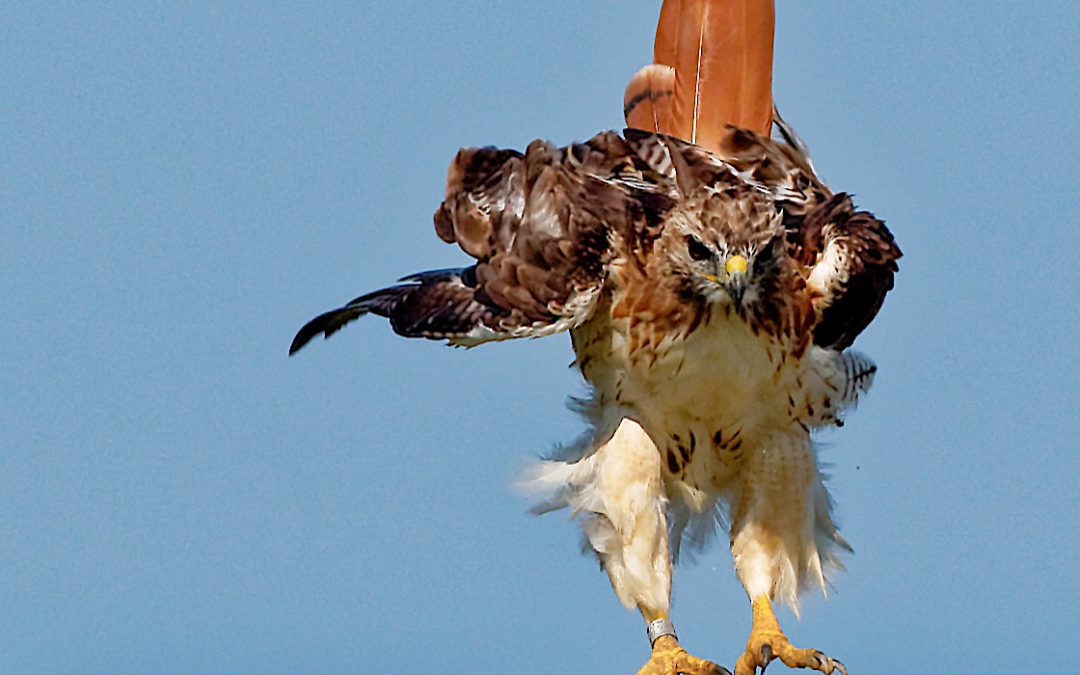
Featured Species: Red-tailed Hawk
Written by Jill Heimrich
Have you ever driven down the expressway or thruway and noticed a fierce-looking, large bird atop the light or telephone pole intently looking at the ground on the side of the road? That bird is most likely a Red-tailed hawk (Buteo jamaicensis), the most widespread and familiar hawk in North America, searching for its next meal. Adults can easily be identified by their cinnamon-red coloring on the top of their tail while the juvenile’s tail is chocolate-brown and banded. Dark belly-bands and patagials (“dirty armpits”) on the leading, underside edge of their wing are two other easily identifiable field markings.
You may also find this highly adaptable hawk sitting high up in tall trees along open fields waiting to swoop down after their prey, or flying over fields, hunting for a varied diet including mice, voles, snakes, birds and rabbits. They also can be found in your local park or large back yard, if you’re lucky enough, hunting another menu item favorite, squirrels.
In the north-eastern range, breeding season usually occurs in late February through March, and starts with a courtship ritual such as “sky-dancing” to either start or strengthen their monogamous bond. The female and male soar together in high circles, vocalizing with their hoarse, raspy shrill. The male may fly higher and then dive repeatedly and swiftly in spectacular maneuvers, even touching the female with his talons or passing prey to the female in flight.
Red-tailed hawks are considered partial migrants. Although many are year round occupants, birds of the far north will migrate south in late fall to avoid harsh winters and then will return to their breeding ground in early spring. In late summer and early fall, there is another type of movement called natal dispersal. This is where the juveniles move from their hatch site to find a breeding territory after their parents stop feeding them. Some of the juveniles will stay close to where they were born, while others will move hundreds of miles or more away, creating a false northern migration in some cases.
The Red-tailed hawk is the featured species of this year’s Bird of Prey Days event. Come on out to learn more about this stunning raptor.
